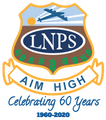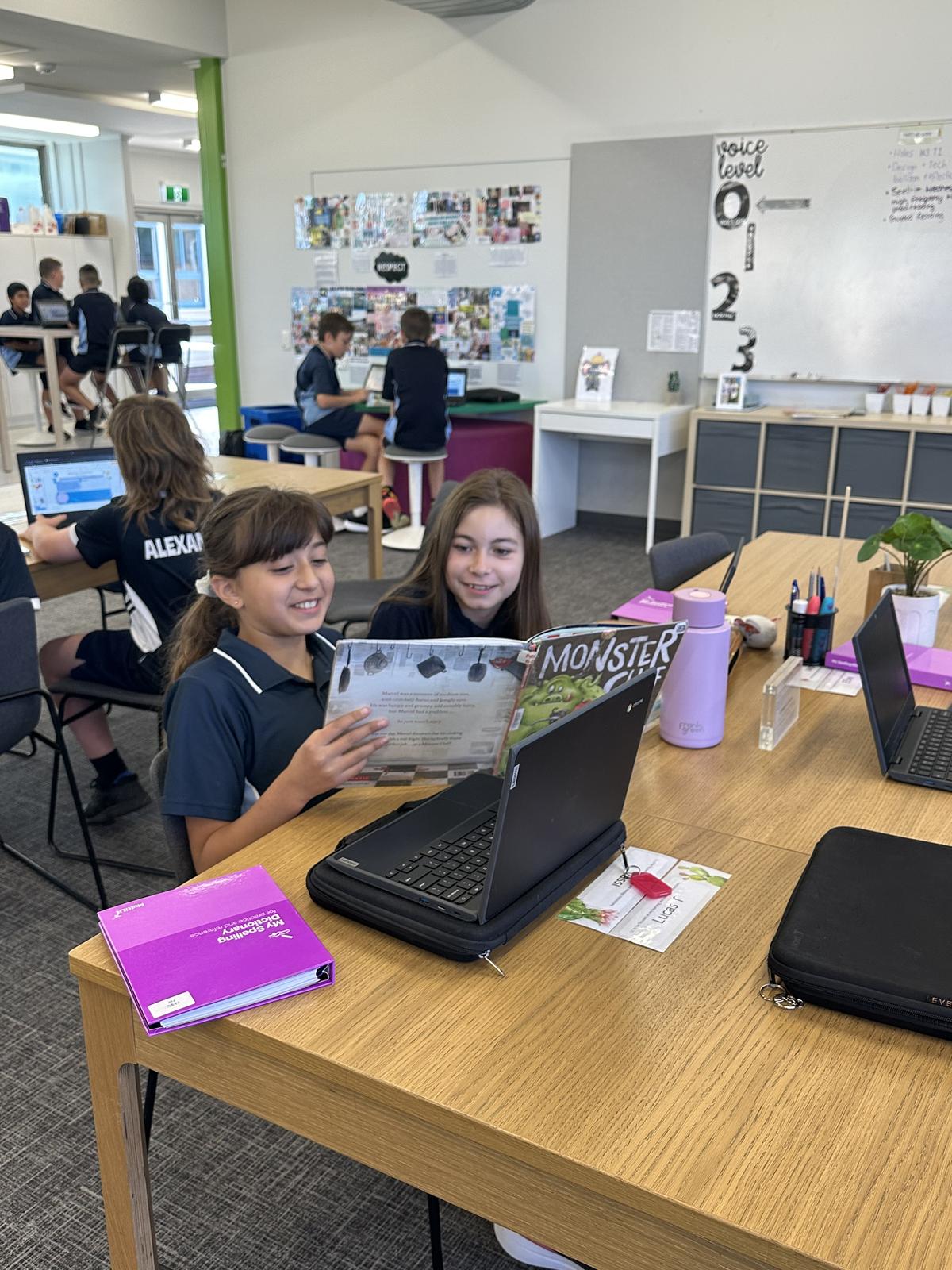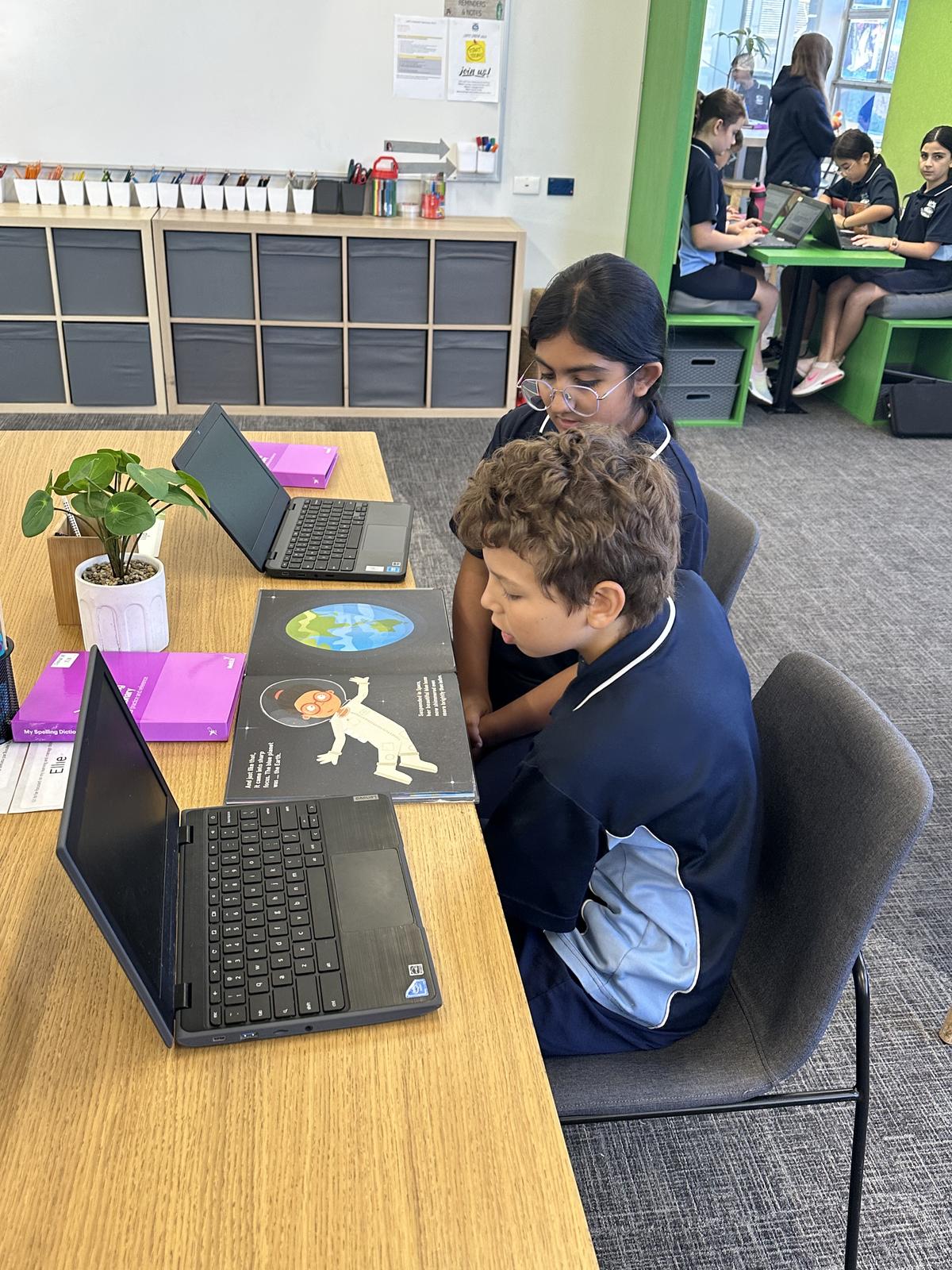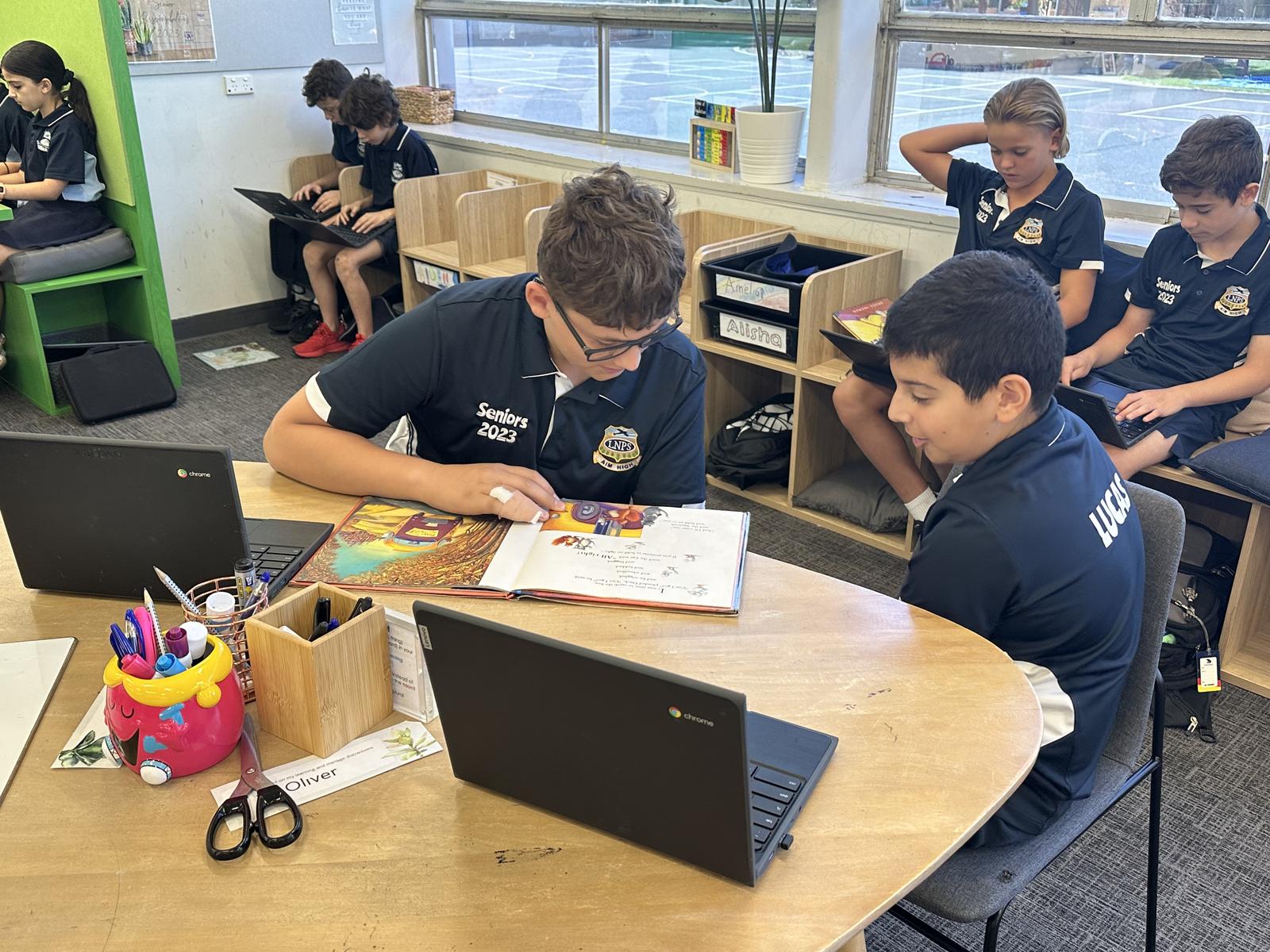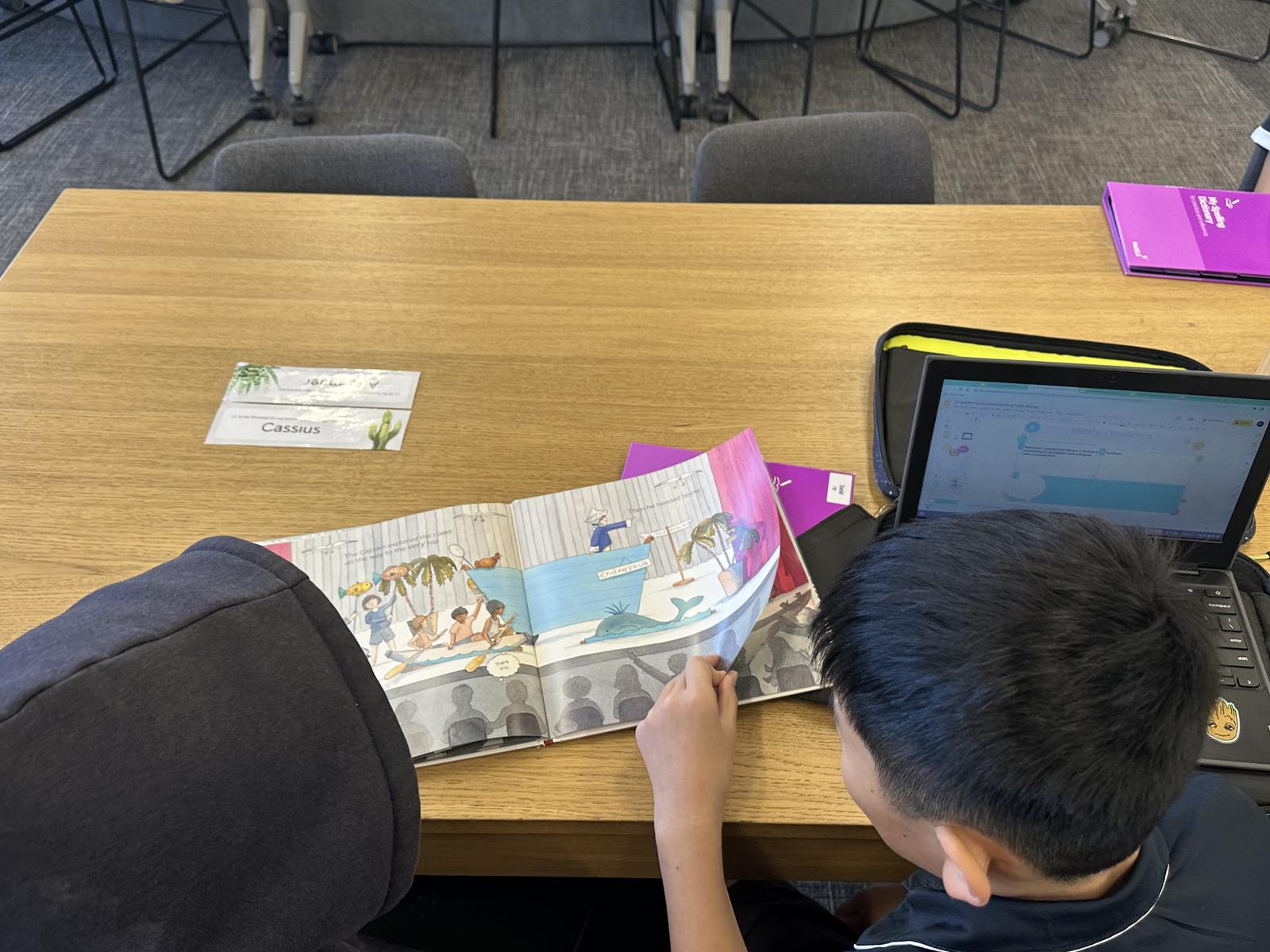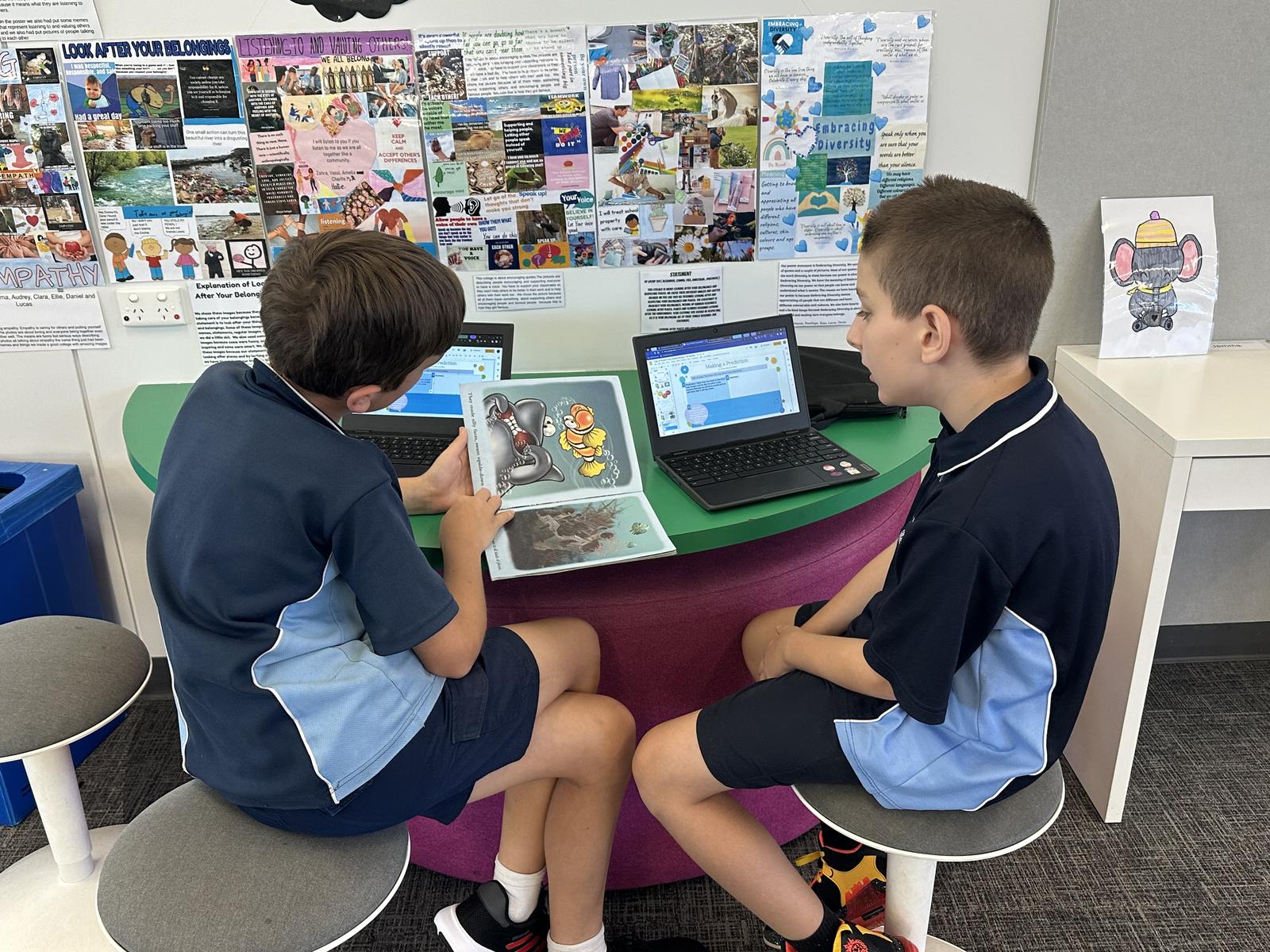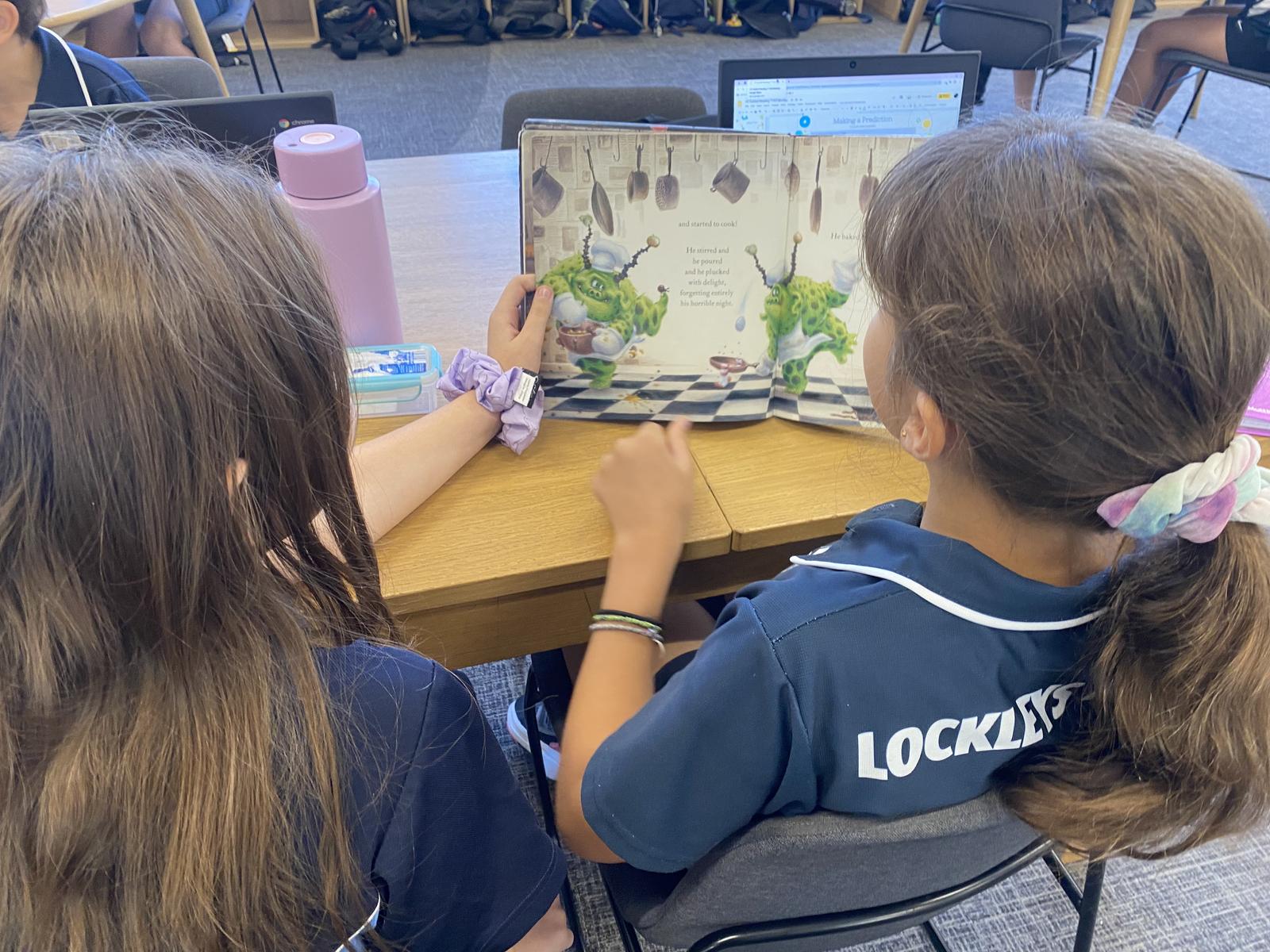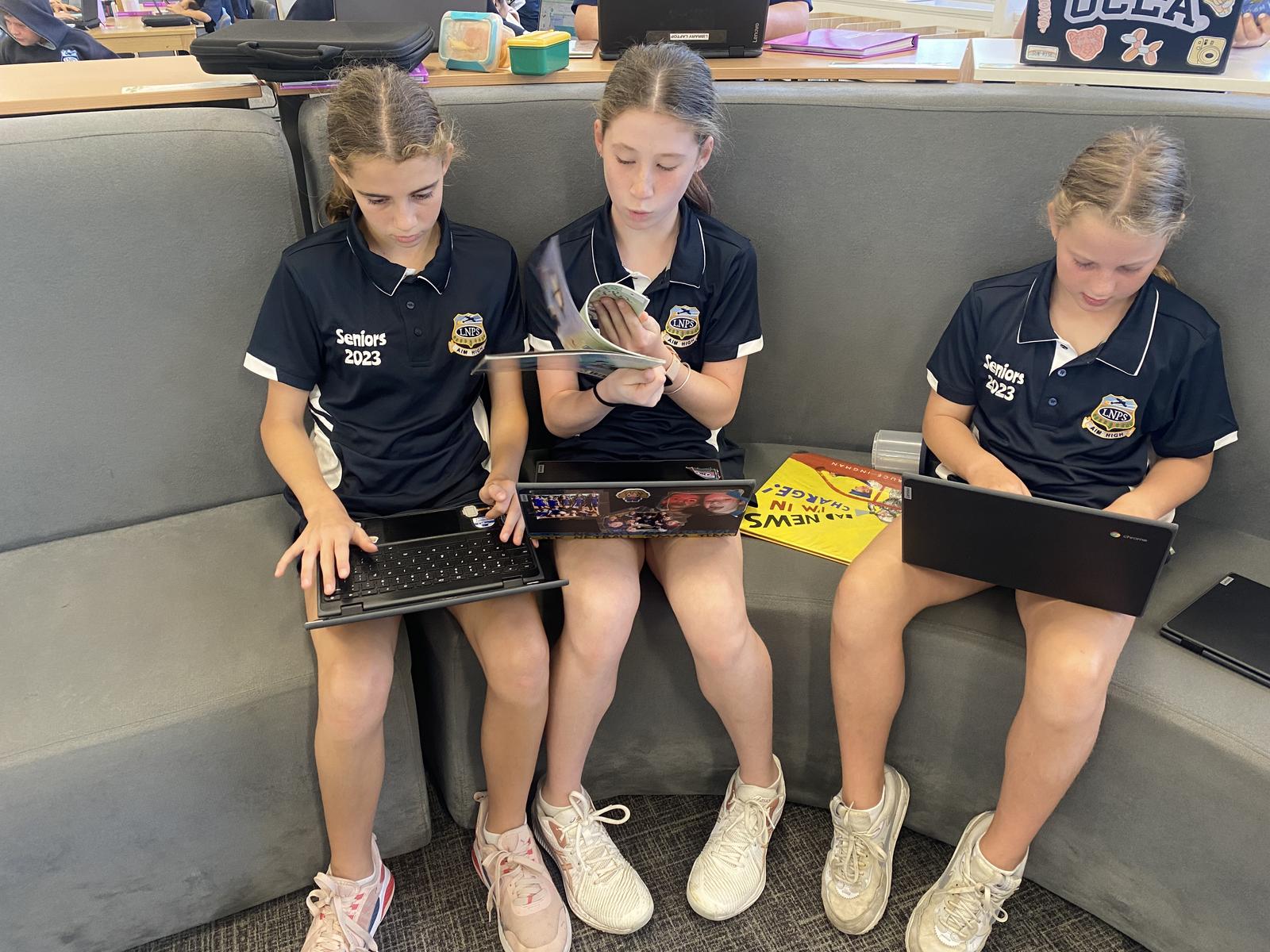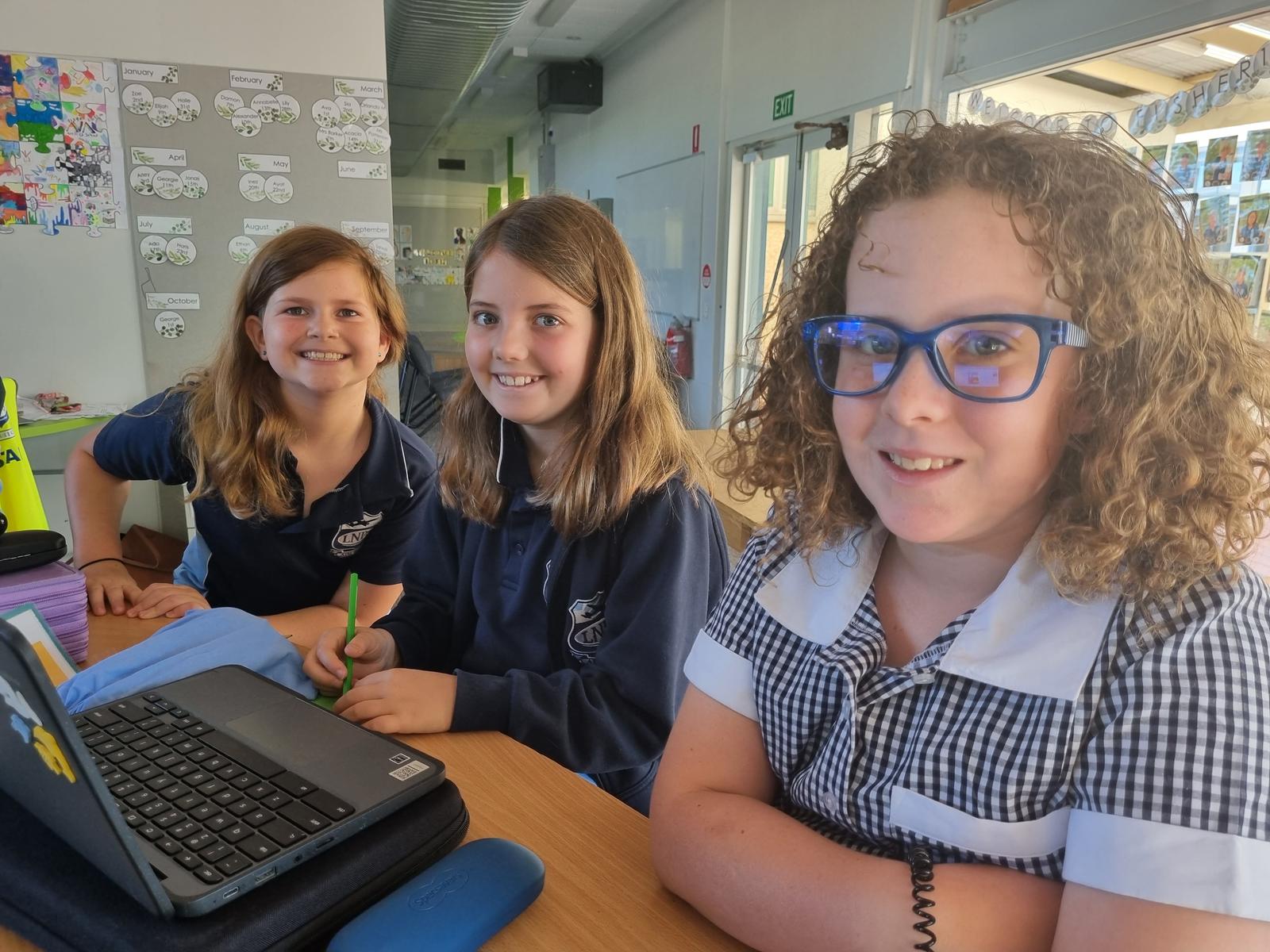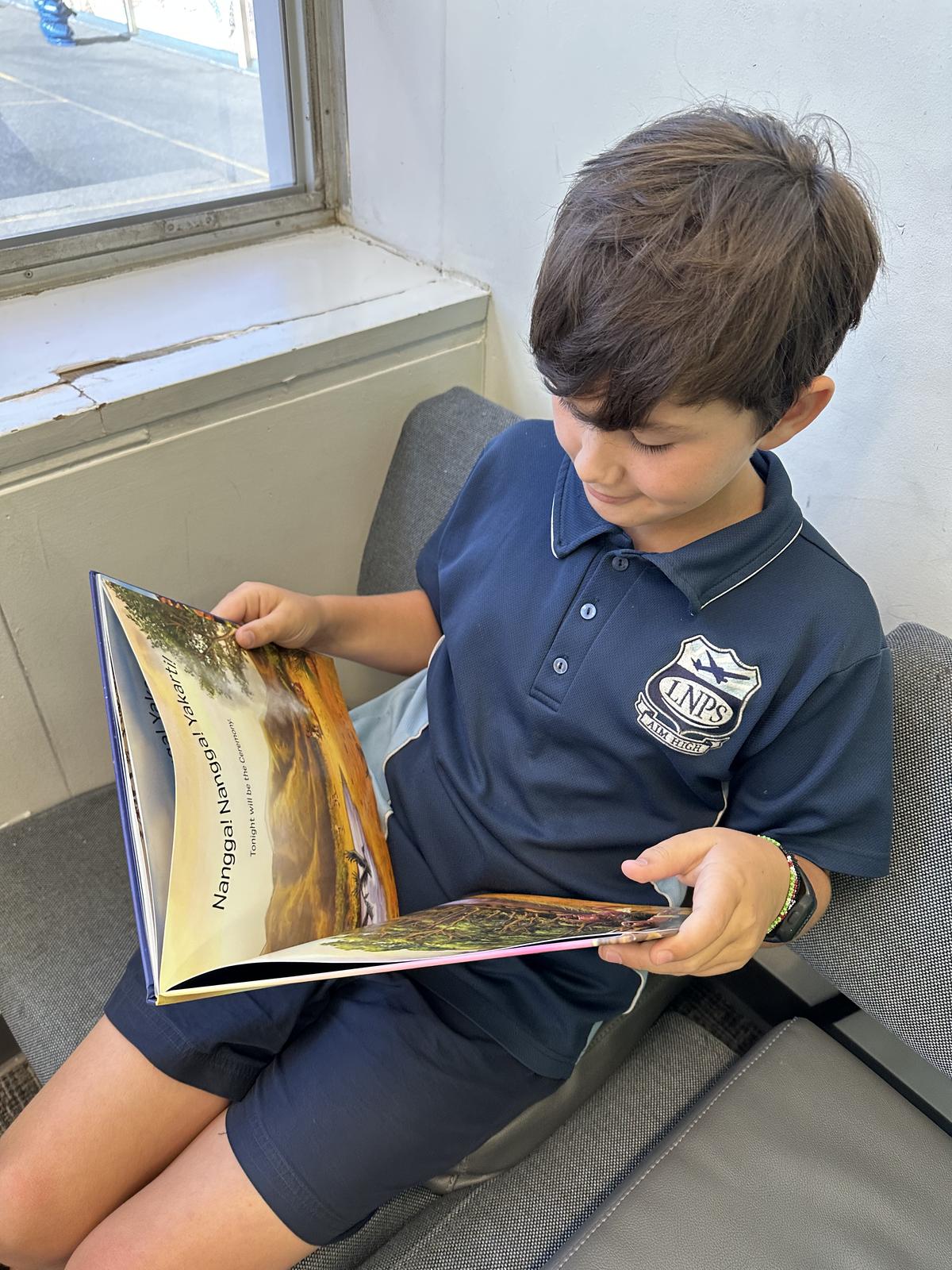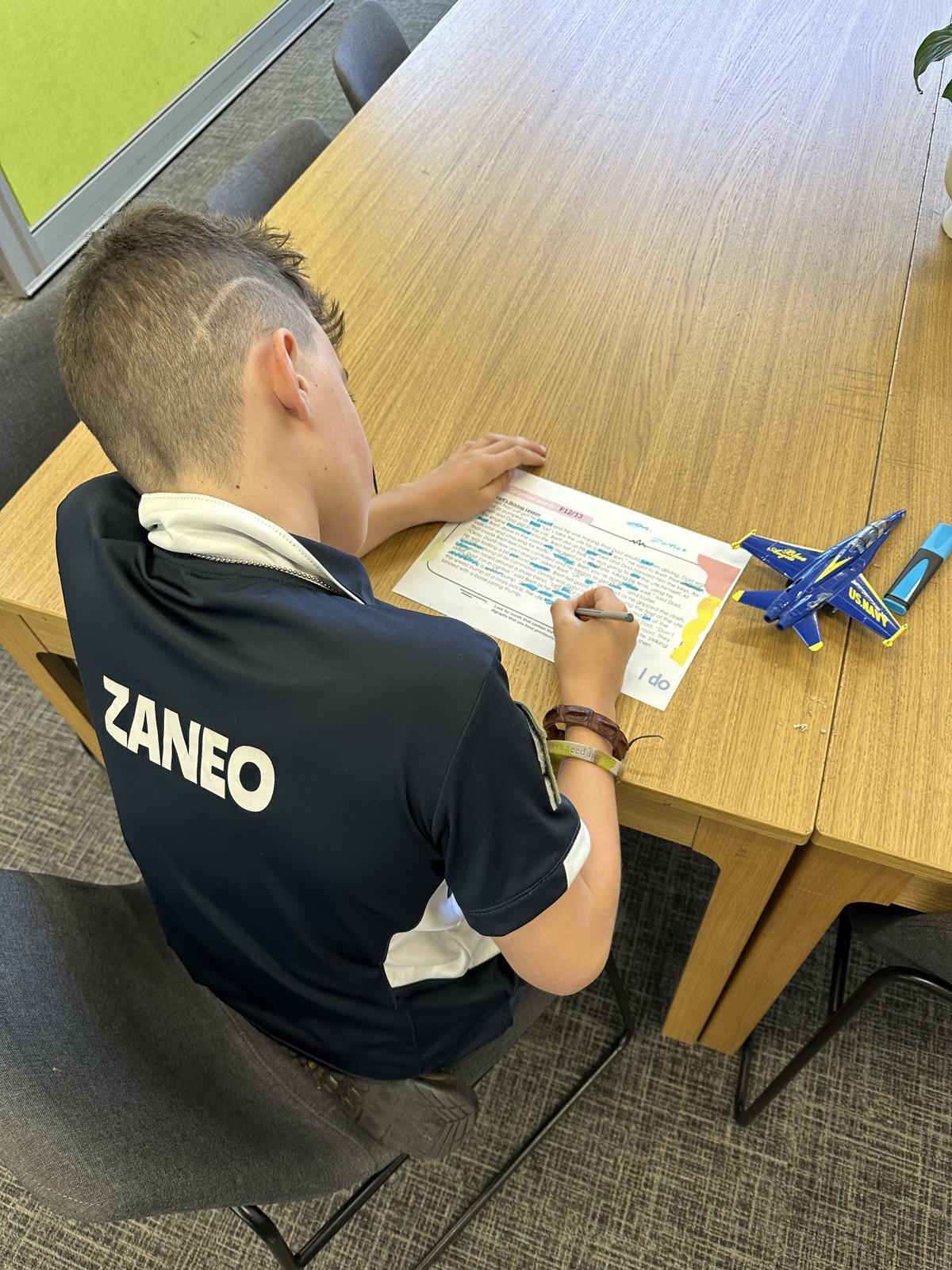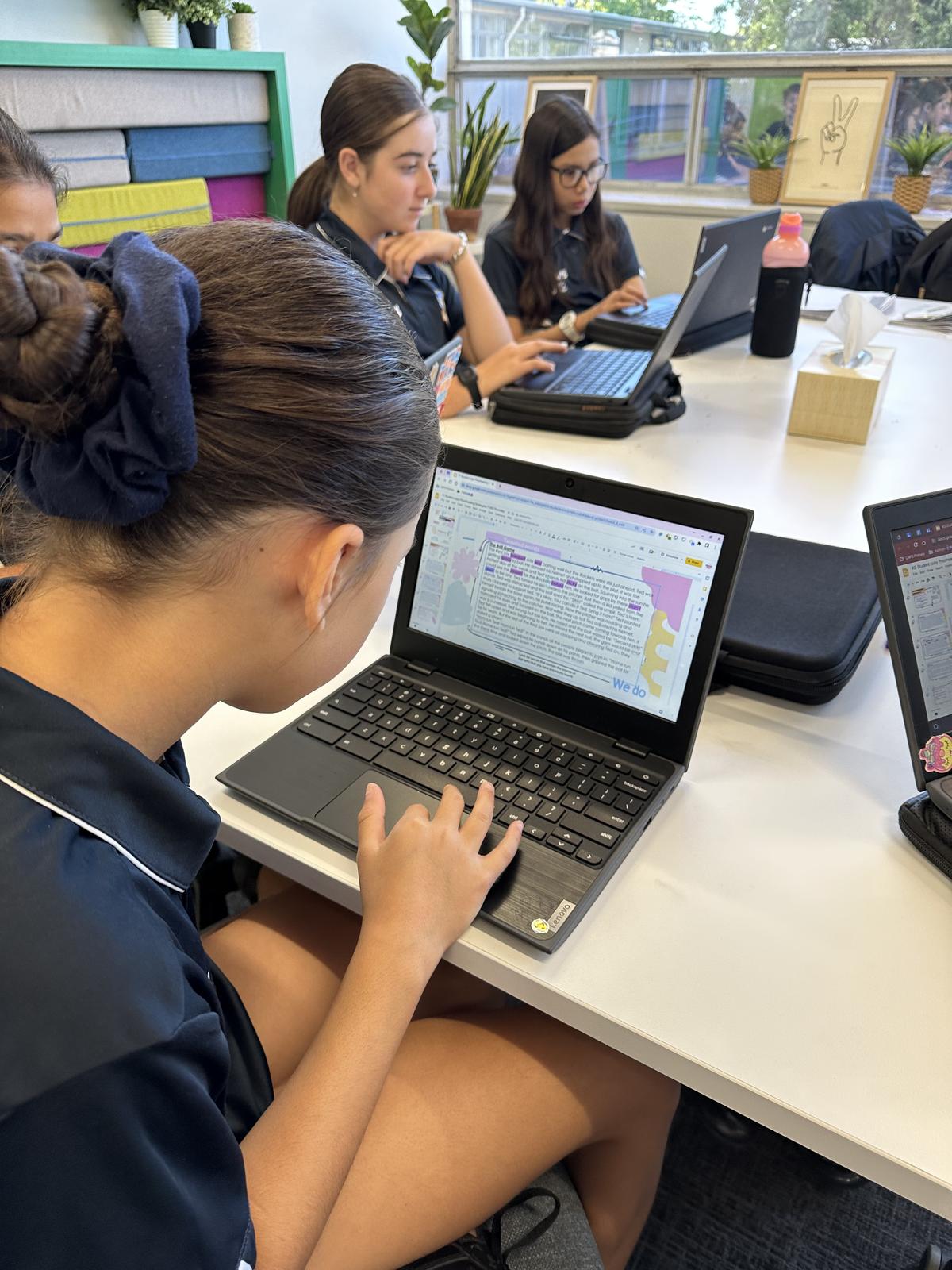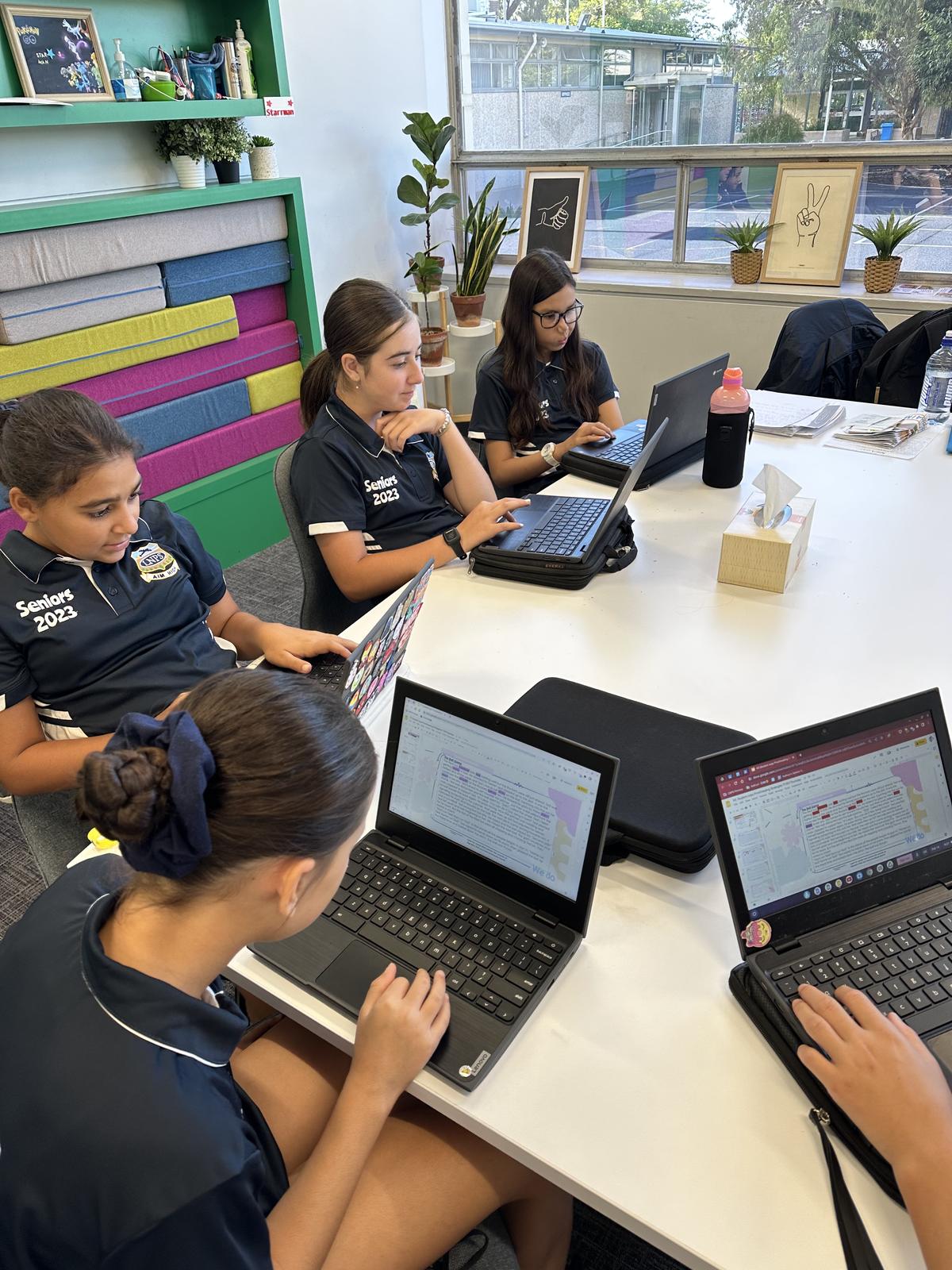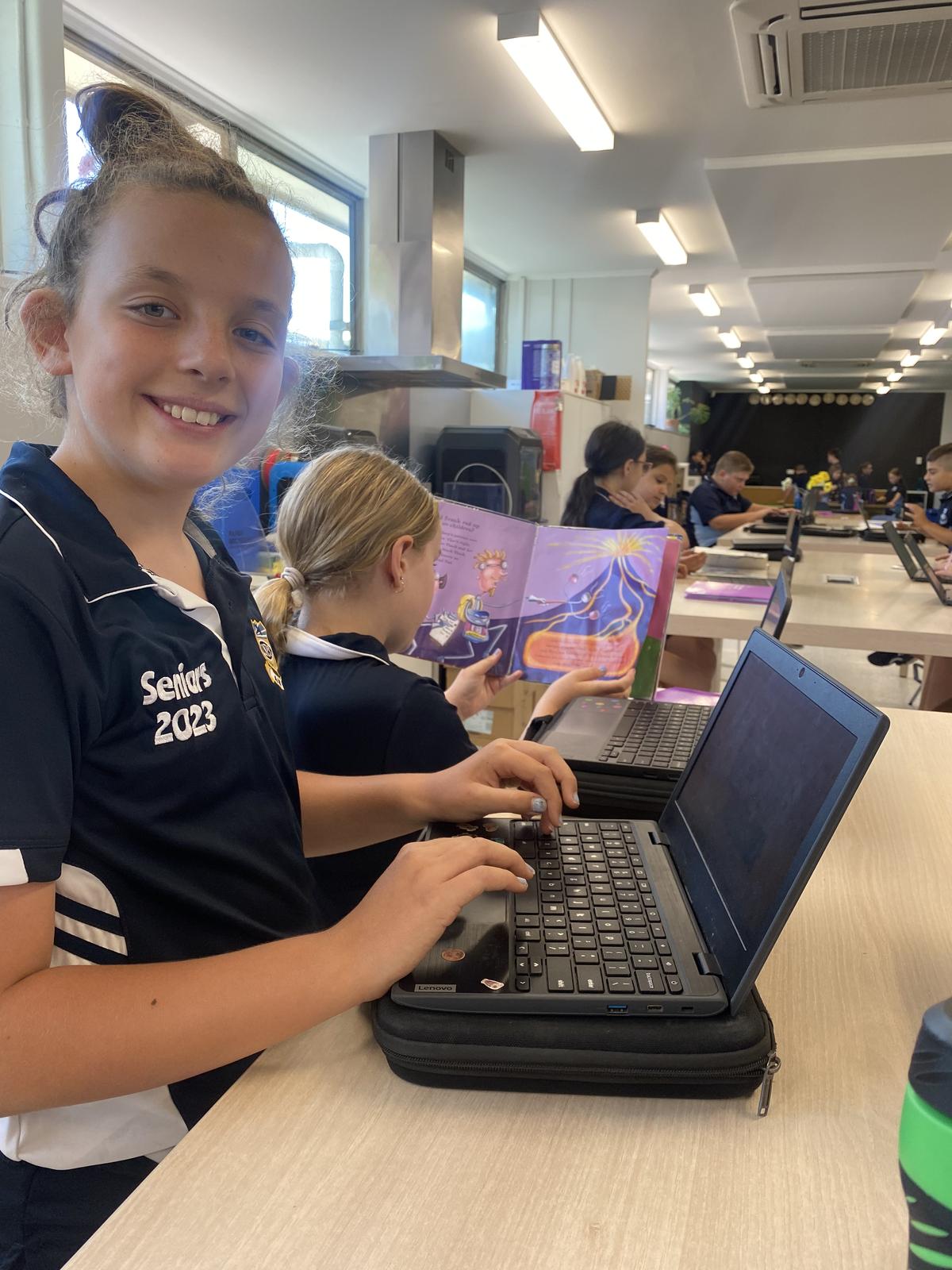ENGLISH
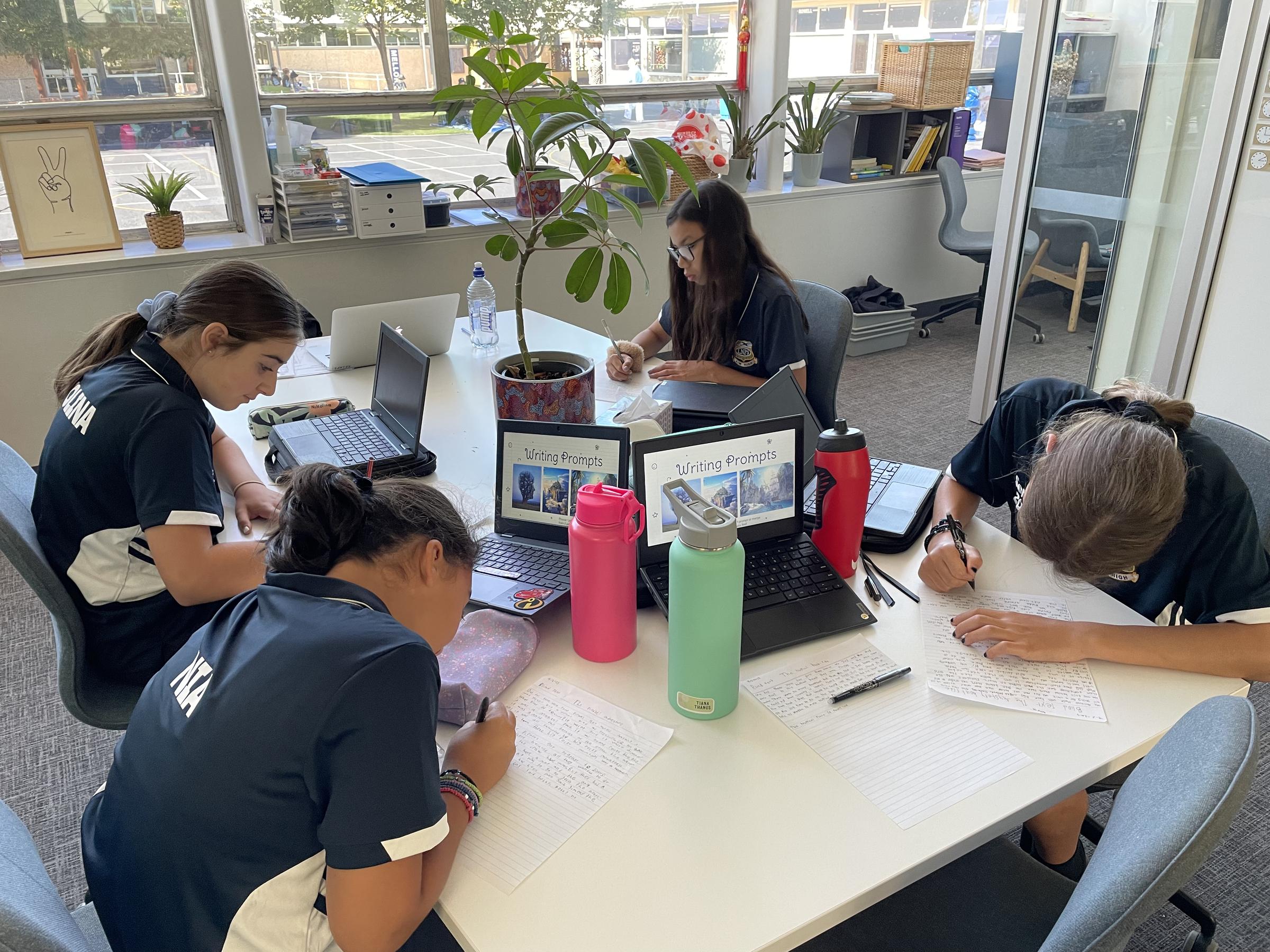
This semester our focus in English is on traditional and short stories, poetry, media and perspectives from the past.
TERM 1
Traditional Stories from Asia
Learning Intentions
Students will:
- understand that many traditional stories originate from peoples and countries of Asia
- identify morals and messages in traditional stories from Asia
- understand how storytellers use text structure and language features to meet the context and purpose of the text
- use comprehension strategies to demonstrate literal and inferred understanding of traditional stories
- respond to traditional stories and express a point of view
- understand how to organise a traditional story using a narrative structure
- understand how to select language features to build meaning and engage an audience
- write a traditional story with an important message for a younger audience
- present a story using appropriate volume, pace, and tone for the intended audience.
Humour in Poetry
Learning Intentions
Students will:
- understand that poems including nonsense poems, limericks and rhymes and chants vary in complexity depending on the topic, purpose and audience
- understand that authors choose structural features and poetic devices to meet the purpose and audience of a poem
- identify structural features and poetic devices used in a poem that create humour
- experiment with the structural features and poetic devices used by authors to innovate on these poems and create own humorous effects
- explain how authors use structural features and poetic devices to create humorous effects to express a viewpoint about a poem.
Short Stories:
Learning Intentions
Students will:
- analyse how text structures and language features work together to entertain readers of short stories
- understand how authors often innovate on text structures and play with language features to achieve particular humorous effects
- identify and compare narrative elements used by authors for humorous effect
- understand how vocabulary choices, including evaluative language can express shades of meaning and feeling
- identify words and word groups that expand and sharpen ideas about characterisation, conflict, and plot in short stories
- understand how authors' language choices and strategies influence readers
- use comprehension strategies to interpret and analyse information and ideas, comparing content from 2 or more short stories
- analyse and evaluate similarities and differences in texts on similar topics, themes, or plots.
Writing a short story:
Learning intentions
Students will:
- understand how text structures and language features work together in a short story
- understand how narrative text structures engage the reader
- understand how authors adapt or combine aspects of short stories in innovative ways
- be able to adapt aspects of familiar short stories
- understand use of cohesive devices in short stories
- be able to use complex sentences in short stories in a variety of ways to elaborate, extend and explain ideas
- understand how authors use specific language features to enhance aesthetic purposes and effects of the short story
- be able to identify and adapt characteristics that define an author's individual style
- be able to adapt aspects of a short story
- be able to make and explain editing choices
- be able to write a short story about a character who faces a conflict.
TERM 2
Aboriginal Stories
Learning Intentions
Students will:
• understand that stories are told in different ways depending on cultural context and purpose
• understand that there are many First Nations Countries in Australia each with their own stories that have been passed down orally through generations
• understand how storytellers select language features to link ideas and provide details about events
• identify how Aboriginal stories use text structures and language features to convey important cultural knowledge and beliefs
• use comprehension strategies to connect ideas across a story
• to create and present an informative multimodal response to an Aboriginal story.
Perspectives from the Past
Learning Intentions
Students will:
• understand that literary texts not only entertain but can inform and influence readers to build understanding about events from the past.
• understand that authors choose text structures and language features to meet the context and purpose of the text
• understand that texts represent different perspectives
• understand that authors can add imaginative details to texts based on historical facts to engage the interest of an audience
• identify the structure and language features used to meet the purpose and intended audience of a range of texts
• use comprehension strategies to build literal and inferred understanding of past events
• create an imaginative recount, based on the ideas and information explored in texts
• present a spoken recount.
Examining media texts
Learning intentions
Students will:
- Evaluate the reliability and credibility of different types of evidence according to agreed criteria and consider how evidence can be used to support and present a particular point of view
- Understand how authors use text structures, language and visual features to influence an audience to accept a particular point of view
- Read, interpret and comprehend information on an issue to classify and select evidence
- Draft, edit and publish a feature article.
Exploring news reports in the media
Learning intentions
Students will:
- understand how news reports from various media sources represent ideas and events in specific ways
- understand that specific language choices position an audience to view the actions of a person or group in a particular way
- understand that complex sentences are used to combine details of issues and events in news reports
- understand how text structures and language features in written responses work together to inform an audience about the reporting of a news event
- understand how the analysis of a news report assists in creating a written response to a news report
- to be able to write a written response to a news report that examines text structures and the use of language to influence an audience
- to be able to edit students’ own and others’ work and explain choices.
